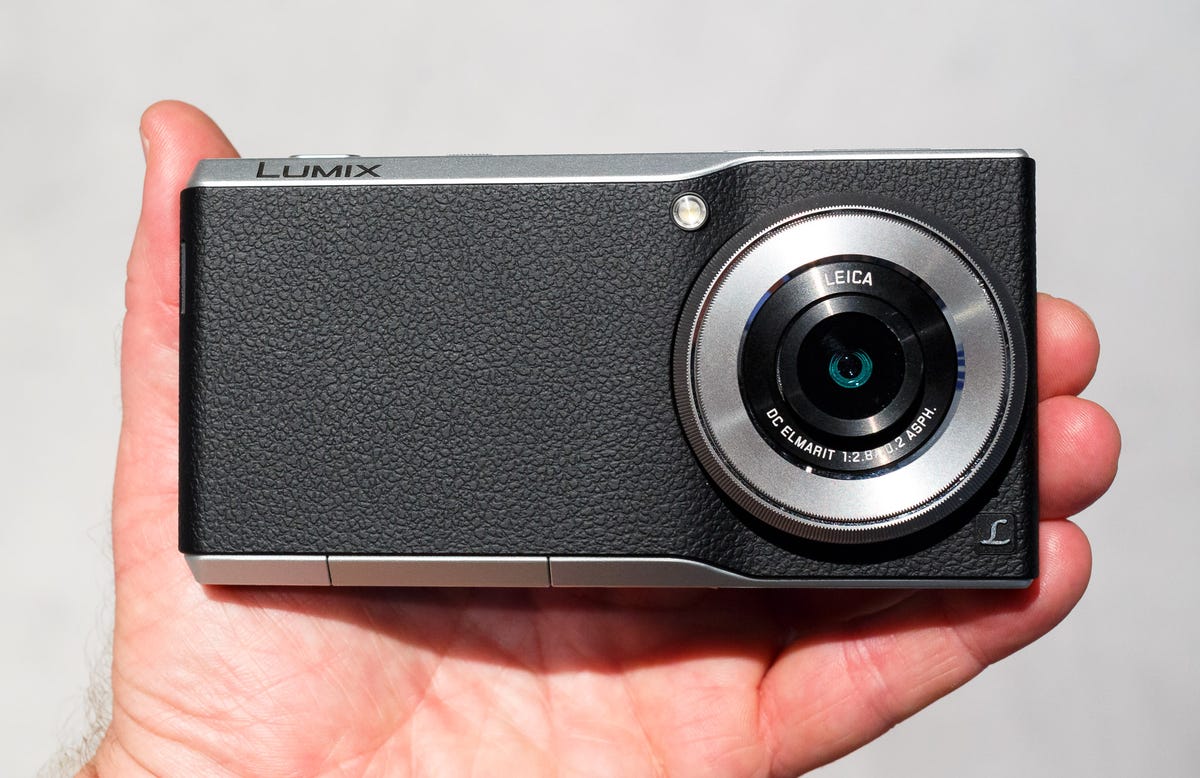
Stephen Shankland/CNET
COLOGNE, Germany — Smartphones have largely replaced compact cameras, but Panasonic launched a new product called the CM1 to bring the two product categories together.
Depending on how you look at it, it’s either a very slim camera or a somewhat bulky Android phone. Its standout feature is a large f2.8 28mm-equivalent lens made by Leica and an accompanying 1-inch, 20-megapixel sensor.
If you like the idea, you’ll probably just have to sigh wistfully, because Panasonic only will sell it in Germany and France, at least for starts when it goes on sale in the fourth quarter. The company unveiled the product at the Photokina show here this week, saying the price would be about €900, which translates to $1,170 / £720 / AUS$1,290.
The usual difficulties of global sales — language support, foreign exchange rates, and so on — are even more complicated for phones. Different countries and different network operators use different wireless radio frequencies, a problem called spectrum fragmentation that afflicts device makers.
The hybrid approach is classically difficult: it’s hard to be as good at two things compared to more specialized equipment tailored for just one or the the other. Smartphones are general-purpose already, including a lesser camera than the CM1’s, and it seems likely the bulk of the market will stick with more conventional designs. But the premium smartphone market is a tough place to stand out, and Panasonic’s certainly does do that.
It’s hard to beat a mainstream giant like a Samsung Galaxy S5 or an Apple iPhone, but the battle for the smartphone niches is more open. That’s how phablets got their start — and now look at the 5.5-inch screen on the coming Apple iPhone 6 Plus.
Panasonic’s CM1 Android-camera hybrid (pictures)






Panasonic isn’t the first to try the hybrid approach. Samsung has done a reasonable job with its Galaxy Camera, though initial products that tried to act as a mobile phone didn’t fare as well as customers gravitated toward the Wi-Fi-only option. Few people want a second mobile phone service contract, it appears. Panasonic clearly is hoping the CM1 will be people’s actual phone, not just a compact camera that happens to run Android.
Another hybrid approach came with the Nikon Coolpix S810c in April, which don’t have any phone aspirations. Nikon hasn’t had much success with the first-generation S800c that arrived in 2012, though. And more from the phone side of the business, Nokia’s smartphone team (now part of Microsoft) has pushed its higher-end PureView line of phone cameras.
The CM1’s lens protrudes a bit, but when you push a manual camera button on top to switch the camera on, the lens extends a little more. Surrounding the lens is a manual adjustment ring, but plenty of the controls are reached using the 4.7-inch 1,920×1,080-pixel touch screen.
The camera also will shoot 4K video, Panasonic said.
The device will come with Android 4.4 KitKat and use LTE networks. It’s got 16GB internal storage, 2GB of memory, a microSDXC slot for expandable storage up to 128GB, and uses a 2.3GHz Qualcomm quad-core processor complemented by Panasonic’s Venus Engine image processor.
The camera measures about the width and height of a premium smartphone, 135.4x68mm, but it’s thicker at 15.2mm. At its thickest part, with the lens pulled in, it measures 21.1mm. It weighs 204 grams.
Updated 10:51 pm PT with pricing information.



